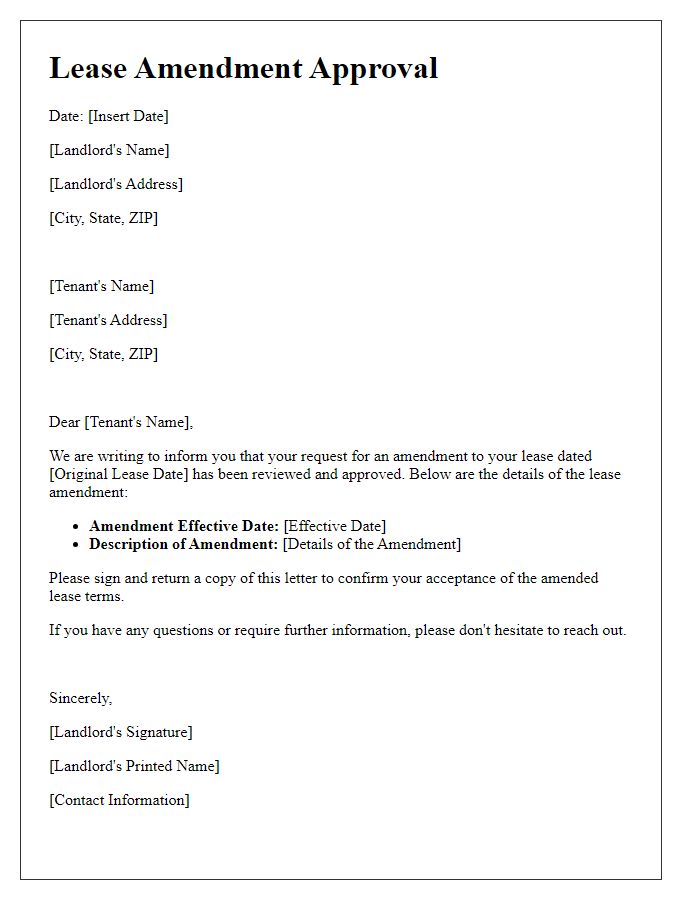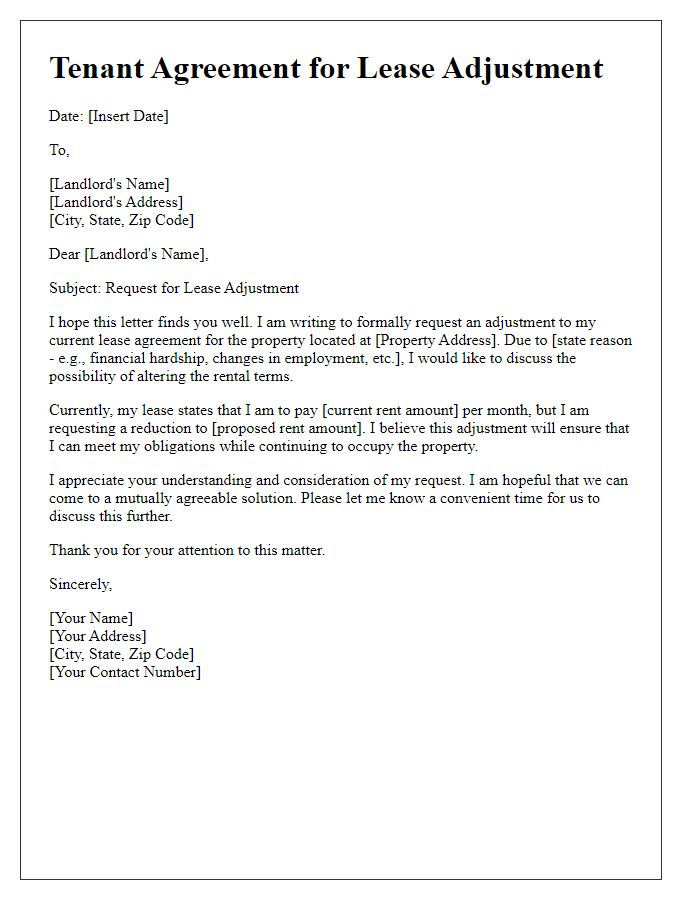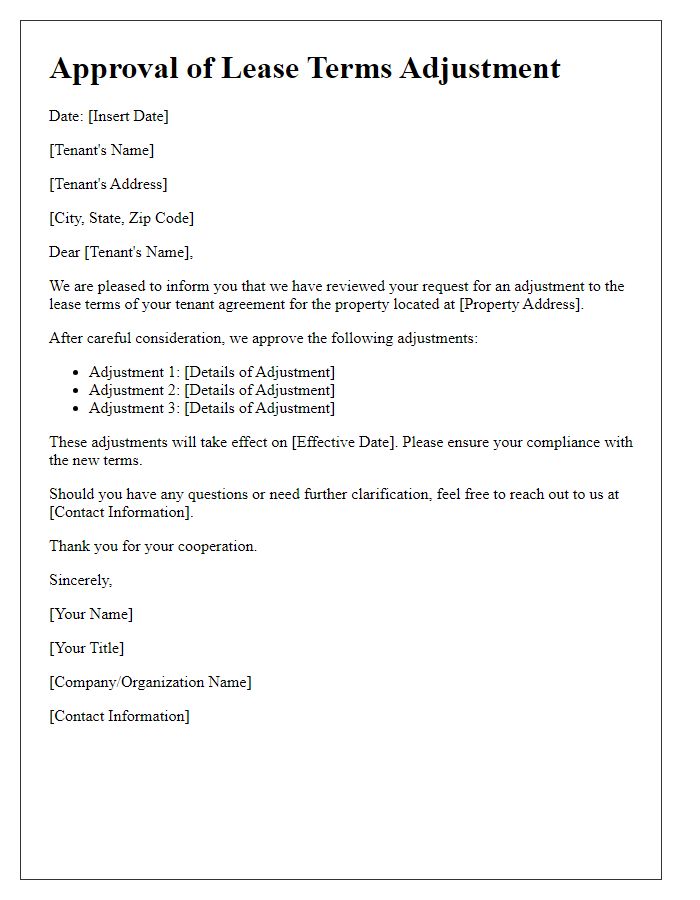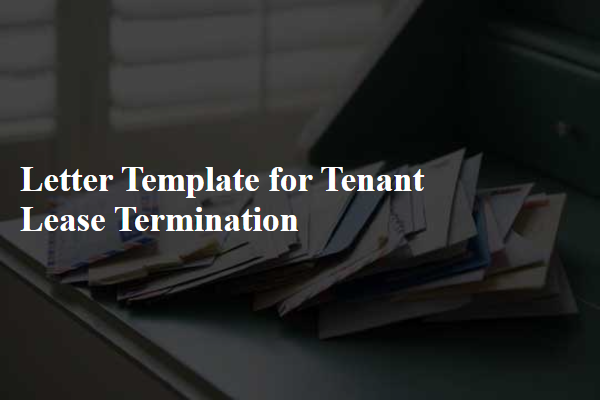Are you a property owner looking to amend your tenant lease agreement? Making adjustments to lease terms can be a straightforward process when you have the right consent letter template on hand. It's essential to ensure that both parties are on the same page and that any changes are clearly documented to avoid confusion down the line. Let's dive into the important elements of a tenant lease amendment consent letter and how to craft one effectivelyâread on for valuable insights!

Clear identification of landlord and tenant.
A tenant lease amendment consent involves clear identification of both the landlord and tenant to ensure all parties are properly documented and recognized. The landlord (name and address), typically the property owner or management company, must provide their full legal name and relevant contact information. The tenant (name and current residence), who is leasing the property under the original lease agreement, must also be clearly identified with their full legal name. The lease amendment document should reference the original lease date, address of the rental property (including apartment number if applicable), and details of the proposed amendments, such as changes in rent, lease duration, or responsibilities. Both parties must sign and date the amendment to signify their consent and acknowledgment of the changes.
Specific details of lease amendment.
A lease amendment consent document outlines specific changes to an existing lease agreement between a landlord and a tenant. For instance, a tenant might request an amendment to adjust the monthly rent from $1,200 to $1,350 starting January 1, 2024, reflecting an increase based on local rental market trends. Other amendments may include extending the lease term from a one-year to an 18-month duration, or altering pet policies to allow two cats instead of one, based on new pet ownership circumstances. Additionally, the amendment may specify the amended property management contact, highlighting a shift in responsibility from Bob's Realty Services to Greenfield Property Management, ensuring tenants are aware of the new points of contact for maintenance and inquiries. All changes should be clearly detailed to avoid misunderstandings and ensure compliance with state regulations regarding lease amendments.
Consent and agreement statements.
A tenant lease amendment consent form formalizes changes to a rental agreement, ensuring transparency and legality between the landlord and tenant. Key elements include the parties' names and contact information, the property address (such as 123 Elm Street, Springfield, Illinois), and a detailed explanation of the specific amendment (like an increase in rent or alteration in lease duration). The consent statement explicitly grants permission for the proposed changes, with a designated date for the amendment to take effect, typically the first of the following month. Acknowledgment signatures from both parties validate the agreement, enhancing trust and facilitating a smoother landlord-tenant relationship.
Updated legal terms and conditions.
A tenant lease amendment consent document outlines updated legal terms and conditions, enabling tenants to acknowledge and accept changes to their leasing agreement. This amendment may include adjustments such as rent increases (typically subject to state regulations), alterations to lease duration, or changes in property management responsibilities. It is crucial for tenants residing in regions like California or New York to understand their rights under local landlord-tenant laws, particularly any provisions for proper notice periods, which can range from 30 to 60 days. The inclusion of clear definitions for terms like "default" and "security deposit" ensures both parties maintain a mutual understanding of the contract's implications in the event of non-compliance.
Signature and date lines for all parties.
A tenant lease amendment consent document outlines crucial changes to existing lease agreements, including the specifics of modified terms or conditions. Tenant names, such as John Smith and Jane Doe, must be clearly listed alongside the property address, such as 123 Maple Street, Cityville, State. The effective date of the amendment, notably October 1, 2023, is vital for record-keeping. Each party's signature line is required to ensure mutual agreement, with spaces designated for printed names and dates to validate consent. Additional clauses may specify the nature of amendments, like changes in rental amount or lease duration, ensuring clarity in the modification process.













Comments